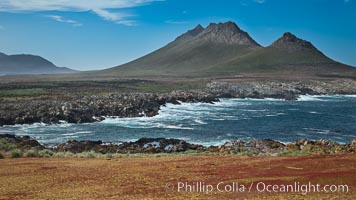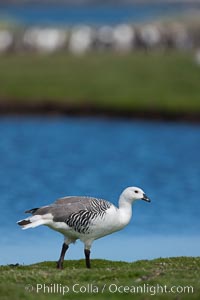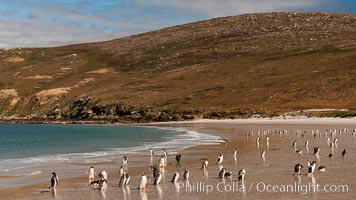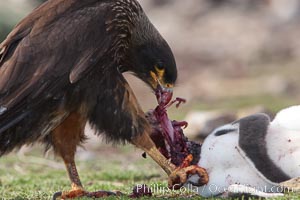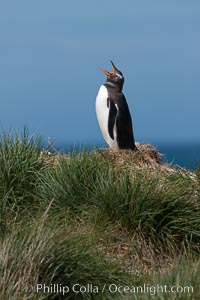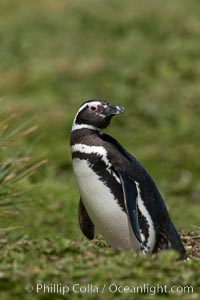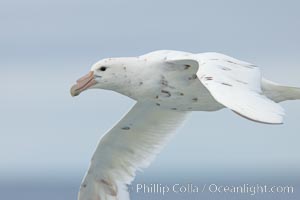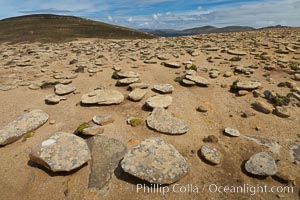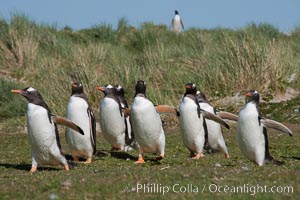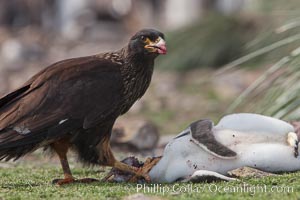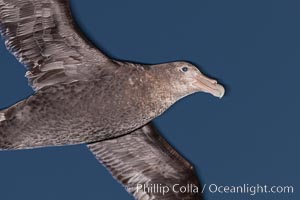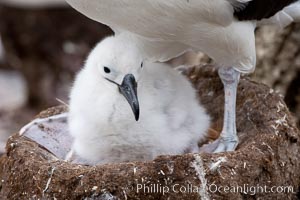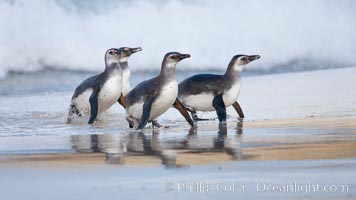
Magellanic penguins, coming ashore on a sandy beach, Spheniscus magellanicus, New Island, Falkland Islands.
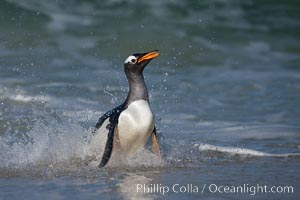
Gentoo penguin coming ashore, after foraging at sea, walking through ocean water as it wades onto a sand beach. Adult gentoo penguins grow to be 30"" and 19lb in size. They feed on fish and crustaceans. Gentoo penguins reside in colonies well inland from the ocean, often formed of a circular collection of stones gathered by the penguins.
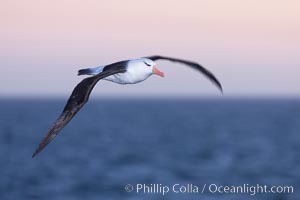
Black-browed albatross in flight, at sea. The black-browed albatross is a medium-sized seabird at 31-37"" long with a 79-94"" wingspan and an average weight of 6.4-10 lb. They have a natural lifespan exceeding 70 years. They breed on remote oceanic islands and are circumpolar, ranging throughout the Southern Oceanic
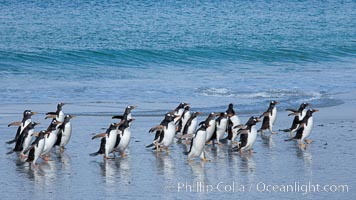
Gentoo penguins coming ashore, after foraging at sea, walking through ocean water as it wades onto a sand beach. Adult gentoo penguins grow to be 30"" and 19lb in size. They feed on fish and crustaceans. Gentoo penguins reside in colonies well inland from the ocean, often formed of a circular collection of stones gathered by the penguins.
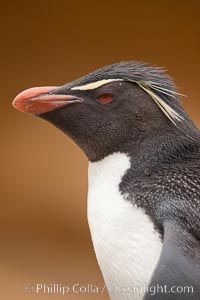
Rockhopper penguin portrait, showing the yellowish plume feathers that extend behind its red eye in adults. The western rockhopper penguin stands about 23"" high and weights up to 7.5 lb, with a lifespan of 20-30 years.
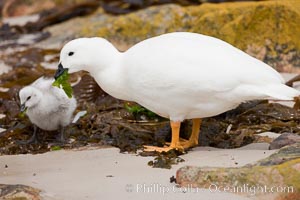
Kelp goose eating kelp, chick and adult male showing entirely white plumage. The kelp goose is noted for eating only seaweed, primarily of the genus ulva. It inhabits rocky coastline habitats where it forages for kelp.
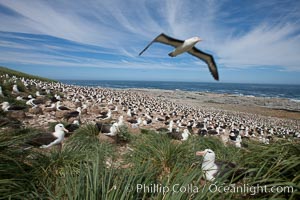
Black-browed albatross in flight, over the enormous colony at Steeple Jason Island in the Falklands.
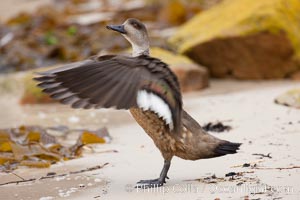
Patagonian crested duck, spreading its wings. The crested dusk inhabits coastal regions where it forages for invertebrates and marine algae. The male and female are similar in appearance.
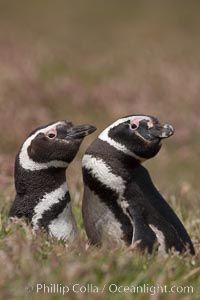
Magellanic penguins, in grasslands at the opening of their underground burrow. Magellanic penguins can grow to 30"" tall, 14 lbs and live over 25 years. They feed in the water, preying on cuttlefish, sardines, squid, krill, and other crustaceans
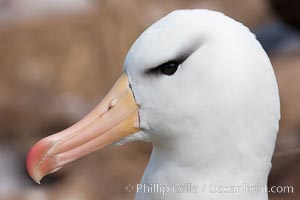
Black-browed albatross, Steeple Jason Island. The black-browed albatross is a medium-sized seabird at 31-37"" long with a 79-94"" wingspan and an average weight of 6.4-10 lb. They have a natural lifespan exceeding 70 years. They breed on remote oceanic islands and are circumpolar, ranging throughout the Southern Oceanic
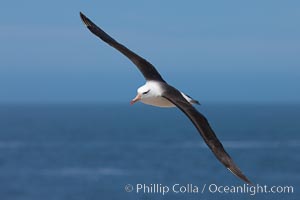
Black-browed albatross, in flight over the ocean. The wingspan of the black-browed albatross can reach 10', it can weigh up to 10 lbs and live for as many as 70 years.
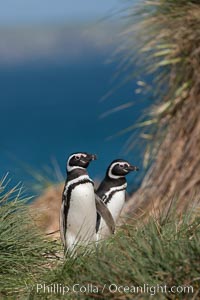
Magellanic penguins (Spheniscus magellanicus) walk through tussock grass, Carcass Island, Falkland Islands.
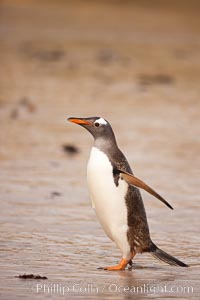
Gentoo penguin coming ashore, after foraging at sea, walking through ocean water as it wades onto a sand beach. Adult gentoo penguins grow to be 30"" and 19lb in size. They feed on fish and crustaceans. Gentoo penguins reside in colonies well inland from the ocean, often formed of a circular collection of stones gathered by the penguins.
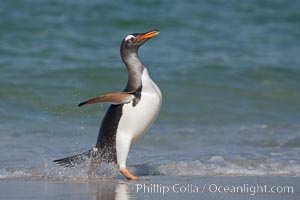
Gentoo penguin coming ashore, after foraging at sea, walking through ocean water as it wades onto a sand beach. Adult gentoo penguins grow to be 30"" and 19lb in size. They feed on fish and crustaceans. Gentoo penguins reside in colonies well inland from the ocean, often formed of a circular collection of stones gathered by the penguins.
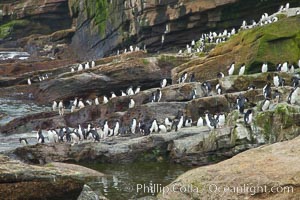
Rockhopper penguins, on rocky coastline of New Island in the Falklands. True to their name, rockhopper penguins scramble over the rocky intertidal zone and up steep hillsides to reach their nesting colonies which may be hundreds of feet above the ocean, often jumping up and over rocks larger than themselves. Rockhopper penguins reach 23"" and 7.5lb in size, and can live 20-30 years. They feed primarily on feed on krill, squid, octopus, lantern fish, molluscs, plankton, cuttlefish, and crustaceans.
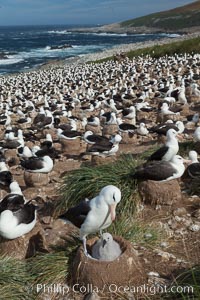
Black-browed albatross colony on Steeple Jason Island in the Falklands. This is the largest breeding colony of black-browed albatrosses in the world, numbering in the hundreds of thousands of breeding pairs. The albatrosses lay eggs in September and October, and tend a single chick that will fledge in about 120 days.
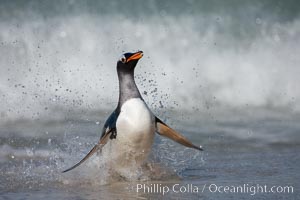
Gentoo penguin coming ashore, after foraging at sea, walking through ocean water as it wades onto a sand beach. Adult gentoo penguins grow to be 30"" and 19lb in size. They feed on fish and crustaceans. Gentoo penguins reside in colonies well inland from the ocean, often formed of a circular collection of stones gathered by the penguins.
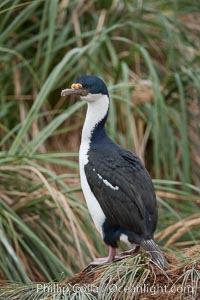
Imperial shag or blue-eyed shag, in tussock grass. The Imperial Shag is about 30"" long and 4-8 lbs, with males averaging larger than females. It can dive as deep as 80' while foraging for small benthic fish, crustaceans, polychaetes, gastropods and octopuses.
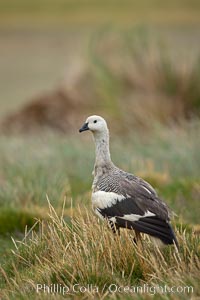
Upland goose, male, walking across grasslands. Males have a white head and breast, females are brown with black-striped wings and yellow feet. Upland geese are 24-29"" long and weigh about 7 lbs.
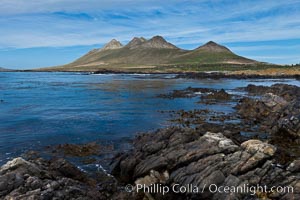
Northeastern coast of Steeple Jason Island, looking toward the southern half of the island. Steeple Jason is one of the remote Jason Group of Islands in the West Falklands. Uninhabited, the island is spectacular both for its rugged scenery and its enormous breeding colony of black-browed albatross. Steeple Jason Island is now owned and administered by the Wildlife Conservation Society.
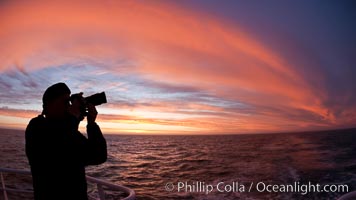
Photographer takes picture of a spectacular sunset arch, spanning the heavens from horizon to horizon, over the open sea between the Falkland Islands and South Georgia Island.
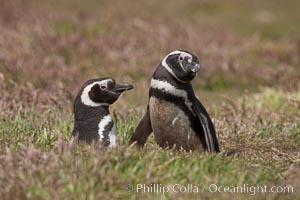
Magellanic penguins, in grasslands at the opening of their underground burrow. Magellanic penguins can grow to 30"" tall, 14 lbs and live over 25 years. They feed in the water, preying on cuttlefish, sardines, squid, krill, and other crustaceans
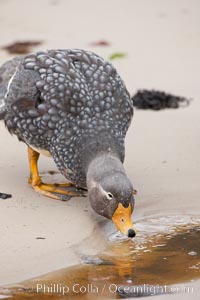
Flightless steamer duck, on sand beach. The flightless steamer duck is a marine duck which occupies and guards a set length of coastline as its territory and, as its name suggests, cannot fly.
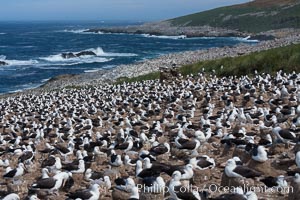
Black-browed albatross colony on Steeple Jason Island in the Falklands. This is the largest breeding colony of black-browed albatrosses in the world, numbering in the hundreds of thousands of breeding pairs. The albatrosses lay eggs in September and October, and tend a single chick that will fledge in about 120 days.
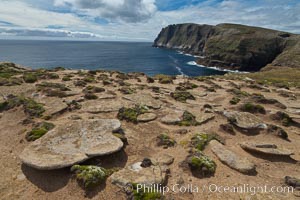
Interesting rock formations on plateau atop New Island, with sheer rugged seacliffs and the ocean beyond.
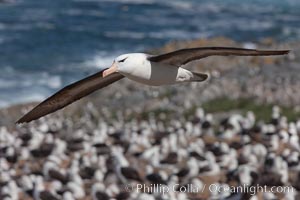
Black-browed albatross in flight, over the enormous colony at Steeple Jason Island in the Falklands.
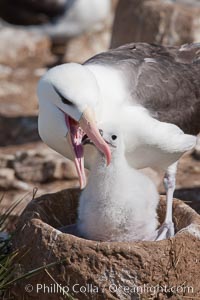
Black-browed albatross, feeding its chick on the nest by regurgitating food it was swallowed while foraging at sea, Steeple Jason Island breeding colony. The single egg is laid in September or October. Incubation takes 68 to 71 days, after which the chick is tended alternately by both adults until it fledges about 120 days later.
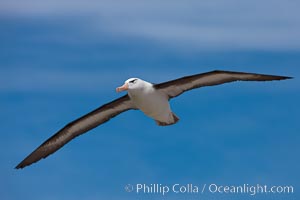
Black-browed albatross in flight, against a blue sky. Black-browed albatrosses have a wingspan reaching up to 8', weigh up to 10 lbs and can live 70 years. They roam the open ocean for food and return to remote islands for mating and rearing their chicks.
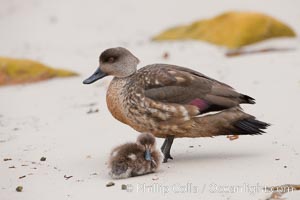
Patagonian crested duck, adult and chick on sand beach. The crested dusk inhabits coastal regions where it forages for invertebrates and marine algae. The male and female are similar in appearance.
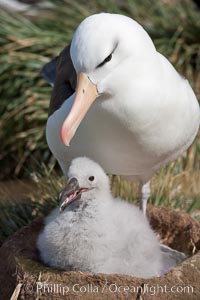
Black-browed albatross, adult and chick, at the enormous colony on Steeple Jason Island in the Falklands. This is the largest breeding colony of black-browed albatrosses in the world, numbering in the hundreds of thousands of breeding pairs. The albatrosses lay eggs in September and October, and tend a single chick that will fledge in about 120 days.
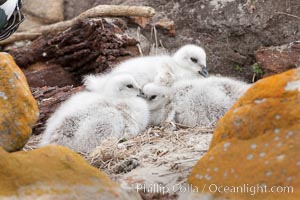
Kelp goose chicks, nestled on sand between rocks. The kelp goose is noted for eating only seaweed, primarily of the genus ulva. It inhabits rocky coastline habitats where it forages for kelp.
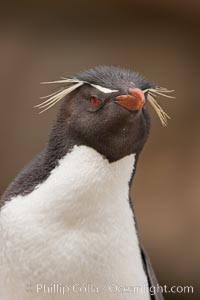
Rockhopper penguin portrait, showing the yellowish plume feathers that extend behind its red eye in adults. The western rockhopper penguin stands about 23"" high and weights up to 7.5 lb, with a lifespan of 20-30 years.
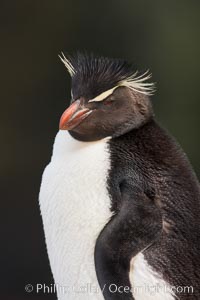
Rockhopper penguin portrait, showing the yellowish plume feathers that extend behind its red eye in adults. The western rockhopper penguin stands about 23"" high and weights up to 7.5 lb, with a lifespan of 20-30 years.
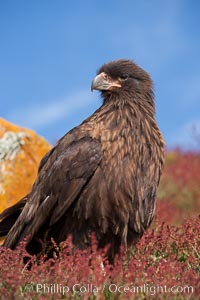
Straited caracara, a bird of prey found throughout the Falkland Islands. The striated caracara is an opportunistic feeder, often scavenging for carrion but also known to attack weak or injured birds.
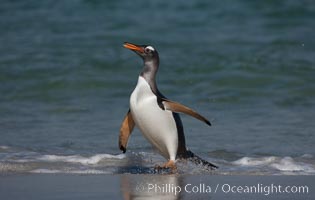
Gentoo penguin coming ashore, after foraging at sea, walking through ocean water as it wades onto a sand beach. Adult gentoo penguins grow to be 30"" and 19lb in size. They feed on fish and crustaceans. Gentoo penguins reside in colonies well inland from the ocean, often formed of a circular collection of stones gathered by the penguins.
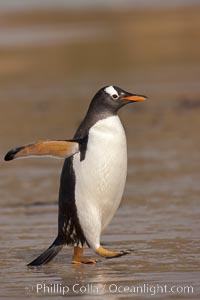
Gentoo penguin coming ashore, after foraging at sea, walking through ocean water as it wades onto a sand beach. Adult gentoo penguins grow to be 30"" and 19lb in size. They feed on fish and crustaceans. Gentoo penguins reside in colonies well inland from the ocean, often formed of a circular collection of stones gathered by the penguins.
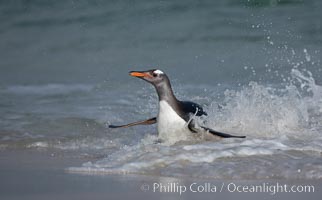
Gentoo penguin coming ashore, after foraging at sea, walking through ocean water as it wades onto a sand beach. Adult gentoo penguins grow to be 30"" and 19lb in size. They feed on fish and crustaceans. Gentoo penguins reside in colonies well inland from the ocean, often formed of a circular collection of stones gathered by the penguins.
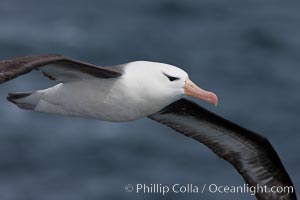
Black-browed albatross in flight. The black-browed albatross is a medium-sized seabird at 31–37"" long with a 79–94"" wingspan and an average weight of 6.4–10 lb. They have a natural lifespan exceeding 70 years. They breed on remote oceanic islands and are circumpolar, ranging throughout the Southern Oceanic.
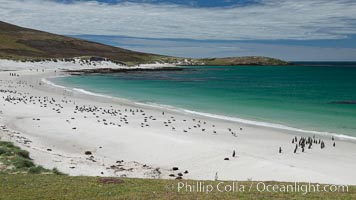
Beautiful white sand beach, on the southern tip of Carcass Island, with gentoo and Magellanic penguins coming and going to sea.
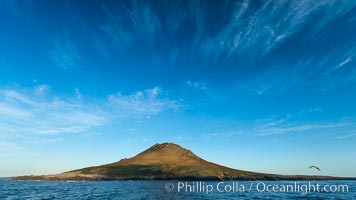
Steeple Jason Island at sunrise, one of the remote Jason Group of Islands in the West Falklands. Uninhabited, the island is spectacular both for its rugged scenery and its enormous breeding colony of black-browed albatross. Steeple Jason Island is now owned and administered by the Wildlife Conservation Society.
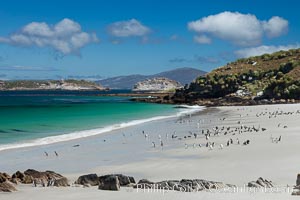
Beautiful white sand beach, on the southern tip of Carcass Island, with gentoo and Magellanic penguins coming and going to sea.
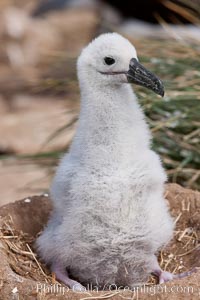
Black-browed albatross chick on its nest, Steeple Jason Island breeding colony. The single egg is laid in September or October. Incubation takes 68 to 71 days, after which the chick is tended alternately by both adults until it fledges about 120 days later.
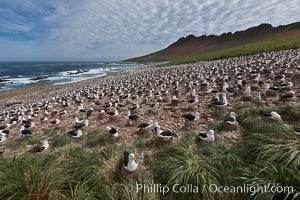
Black-browed albatross colony on Steeple Jason Island in the Falklands. This is the largest breeding colony of black-browed albatrosses in the world, numbering in the hundreds of thousands of breeding pairs. The albatrosses lay eggs in September and October, and tend a single chick that will fledge in about 120 days.
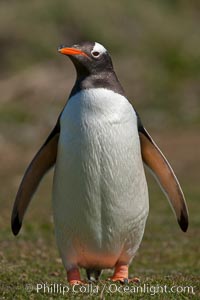
Gentoo penguin. Gentoo penguins reach 36"" in height and weigh up to 20 lbs. They are the fastest swimming species of penguing, feeding in marine crustaceans and fishes.
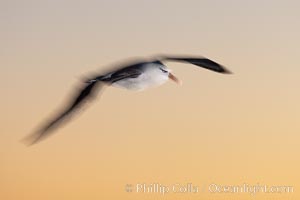
Black-browed albatross in flight, at sea. The black-browed albatross is a medium-sized seabird at 31-37"" long with a 79-94"" wingspan and an average weight of 6.4-10 lb. They have a natural lifespan exceeding 70 years. They breed on remote oceanic islands and are circumpolar, ranging throughout the Southern Oceanic
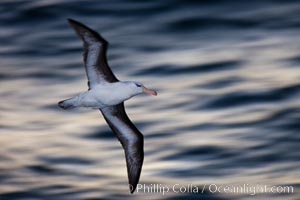
Black-browed albatross flying over the ocean, as it travels and forages for food at sea. The black-browed albatross is a medium-sized seabird at 31-37"" long with a 79-94"" wingspan and an average weight of 6.4-10 lb. They have a natural lifespan exceeding 70 years. They breed on remote oceanic islands and are circumpolar, ranging throughout the Southern Oceanic
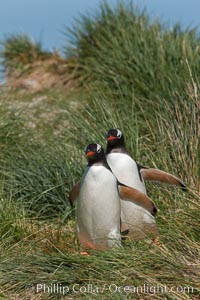
Gentoo penguins walk through tussock grass. After foraging in the ocean for food, the penguins make their way to the interior of the island to rest at their colony.
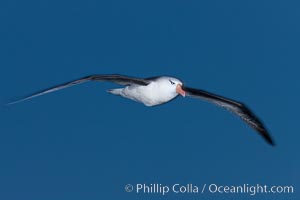
Black-browed albatross in flight, at sea. The black-browed albatross is a medium-sized seabird at 31-37"" long with a 79-94"" wingspan and an average weight of 6.4-10 lb. They have a natural lifespan exceeding 70 years. They breed on remote oceanic islands and are circumpolar, ranging throughout the Southern Oceanic
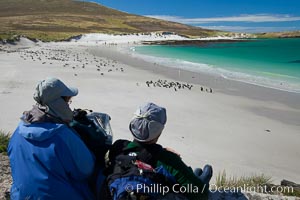
Visitors watch gentoo and Magellanic penguins on beautiful Leopard Beach, coming ashore after they have foraged at sea.
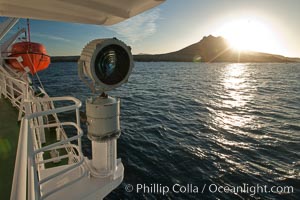
Steeple Jason Island viewed from the M/V Polar Star. Steeple Jason is one of the remote Jason Group of Islands in the West Falklands. Two large mounds of tussock grass, common throughout the Falkland Islands, are seen. Uninhabited, the island is spectacular both for its rugged scenery and its enormous breeding colony of black-browed albatross. Steeple Jason Island is now owned and administered by the Wildlife Conservation Society.
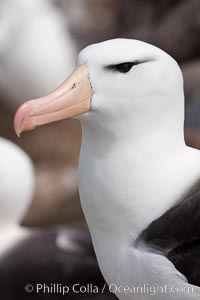
Black-browed albatross, Steeple Jason Island. The black-browed albatross is a medium-sized seabird at 31-37"" long with a 79-94"" wingspan and an average weight of 6.4-10 lb. They have a natural lifespan exceeding 70 years. They breed on remote oceanic islands and are circumpolar, ranging throughout the Southern Oceanic
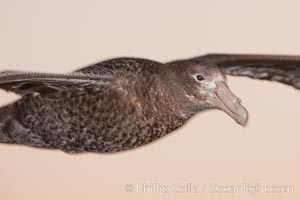
Southern giant petrel in flight. The distinctive tube nose (naricorn), characteristic of species in the Procellariidae family (tube-snouts), is easily seen.
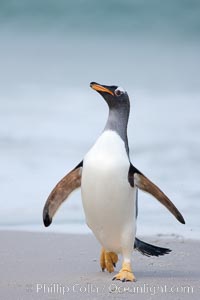
Gentoo penguin coming ashore, after foraging at sea, walking through ocean water as it wades onto a sand beach. Adult gentoo penguins grow to be 30"" and 19lb in size. They feed on fish and crustaceans. Gentoo penguins reside in colonies well inland from the ocean, often formed of a circular collection of stones gathered by the penguins.
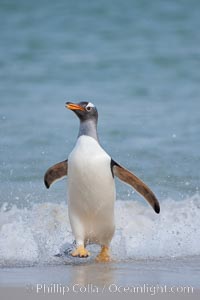
Gentoo penguin coming ashore, after foraging at sea, walking through ocean water as it wades onto a sand beach. Adult gentoo penguins grow to be 30"" and 19lb in size. They feed on fish and crustaceans. Gentoo penguins reside in colonies well inland from the ocean, often formed of a circular collection of stones gathered by the penguins.
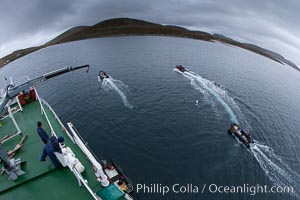
Zodiac boats, are lowered into the ocean from the ship M/V Polar Star in preparation for a day exploring New Island in the Falklands.
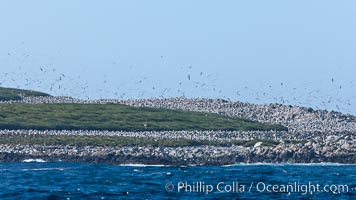
Steeple Jason Island, one of the remote Jason Group of Islands in the West Falklands. Uninhabited, the island is spectacular both for its rugged scenery and its enormous breeding colony of black-browed albatross. Steeple Jason Island is now owned and administered by the Wildlife Conservation Society.
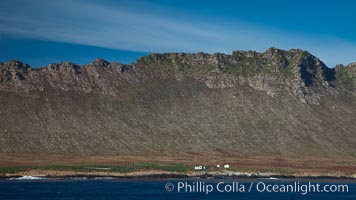
Steeple Jason Island, one of the remote Jason Group of Islands in the West Falklands. Two large mounds of tussock grass, common throughout the Falkland Islands, are seen. Uninhabited, the island is spectacular both for its rugged scenery and its enormous breeding colony of black-browed albatross. Steeple Jason Island is now owned and administered by the Wildlife Conservation Society.
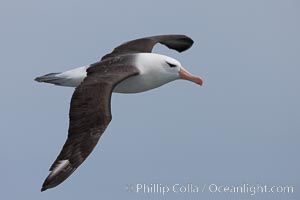
Black-browed albatross in flight. The black-browed albatross is a medium-sized seabird at 31–37"" long with a 79–94"" wingspan and an average weight of 6.4–10 lb. They have a natural lifespan exceeding 70 years. They breed on remote oceanic islands and are circumpolar, ranging throughout the Southern Oceanic.
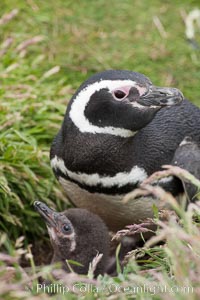
Magellanic penguin, adult and chick, in grasslands at the opening of their underground burrow. Magellanic penguins can grow to 30"" tall, 14 lbs and live over 25 years. They feed in the water, preying on cuttlefish, sardines, squid, krill, and other crustaceans
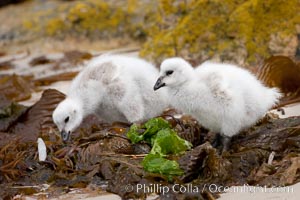
Kelp goose chicks eating kelp (seaweed). The kelp goose is noted for eating only seaweed, primarily of the genus ulva. It inhabits rocky coastline habitats where it forages for kelp.
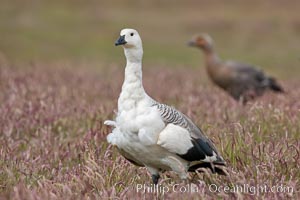
Upland goose, male, walking across grasslands. Males have a white head and breast, females are brown with black-striped wings and yellow feet. Upland geese are 24-29"" long and weigh about 7 lbs.
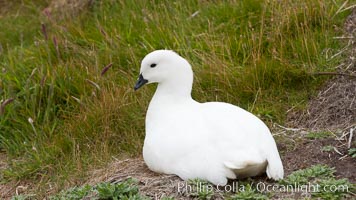
Kelp goose, male showing entirely white plumage. The kelp goose is noted for eating only seaweed, primarily of the genus ulva. It inhabits rocky coastline habitats where it forages for kelp.
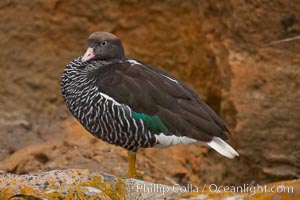
Kelp goose, female with multicolored plumage very different from the pure white of male kelp geese. The kelp goose is noted for eating only seaweed, primarily of the genus ulva. It inhabits rocky coastline habitats where it forages for kelp.
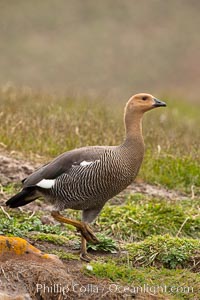
Upland goose, female, walking across grasslands. Males have a white head and breast, females are brown with black-striped wings and yellow feet. Upland geese are 24-29"" long and weigh about 7 lbs.
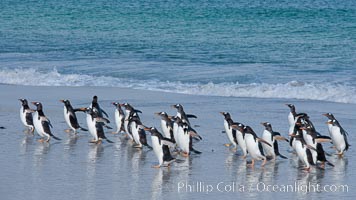
Gentoo penguin coming ashore, after foraging at sea, walking through ocean water as it wades onto a sand beach. Adult gentoo penguins grow to be 30"" and 19lb in size. They feed on fish and crustaceans. Gentoo penguins reside in colonies well inland from the ocean, often formed of a circular collection of stones gathered by the penguins.
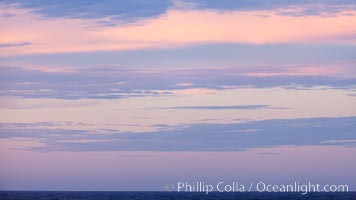
Sunset, dusk clouds, detail in the sky over the open sea, somewhere between Falkland Islands and South Georgia Island.
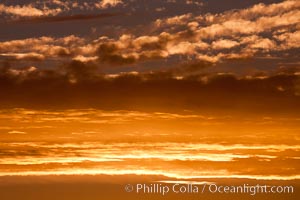
Sunset, dusk clouds, detail in the sky over the open sea, somewhere between Falkland Islands and South Georgia Island.
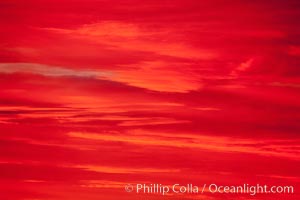
Sunset clouds, detail and colors, at sea on the open ocean between the Falkland Islands and South Georgia Island.
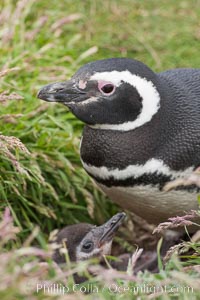
Magellanic penguin, adult and chick, in grasslands at the opening of their underground burrow. Magellanic penguins can grow to 30"" tall, 14 lbs and live over 25 years. They feed in the water, preying on cuttlefish, sardines, squid, krill, and other crustaceans
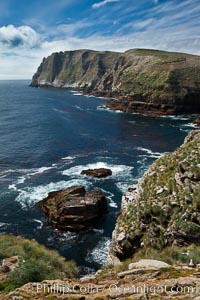
Tall seacliffs overlook the southern Atlantic Ocean, a habitat on which albatross and penguin reside.
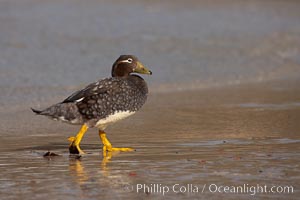
Gentoo penguin coming ashore, after foraging at sea, walking through ocean water as it wades onto a sand beach. Adult gentoo penguins grow to be 30"" and 19lb in size. They feed on fish and crustaceans. Gentoo penguins reside in colonies well inland from the ocean, often formed of a circular collection of stones gathered by the penguins.
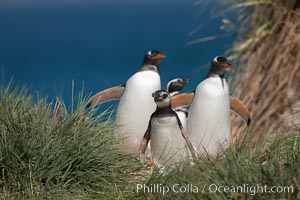
Mixed group of Magellanic and gentoo penguins, walk from the ocean through tall tussock grass to the interior of Carcass Island.
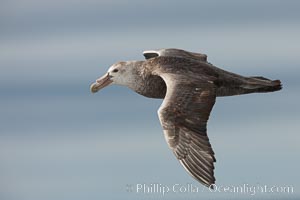
Southern giant petrel in flight. The distinctive tube nose (naricorn), characteristic of species in the Procellariidae family (tube-snouts), is easily seen.
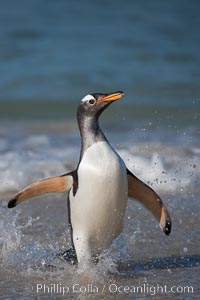
Gentoo penguin coming ashore, after foraging at sea, walking through ocean water as it wades onto a sand beach. Adult gentoo penguins grow to be 30"" and 19lb in size. They feed on fish and crustaceans. Gentoo penguins reside in colonies well inland from the ocean, often formed of a circular collection of stones gathered by the penguins.
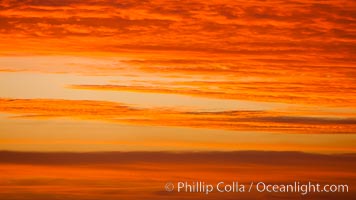
Sunset clouds, detail and colors, at sea on the open ocean between the Falkland Islands and South Georgia Island.
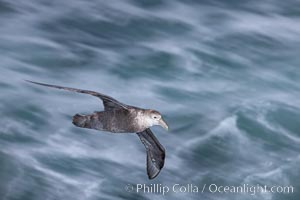
Southern giant petrel in flight at dusk, after sunset, as it soars over the open ocean in search of food.
